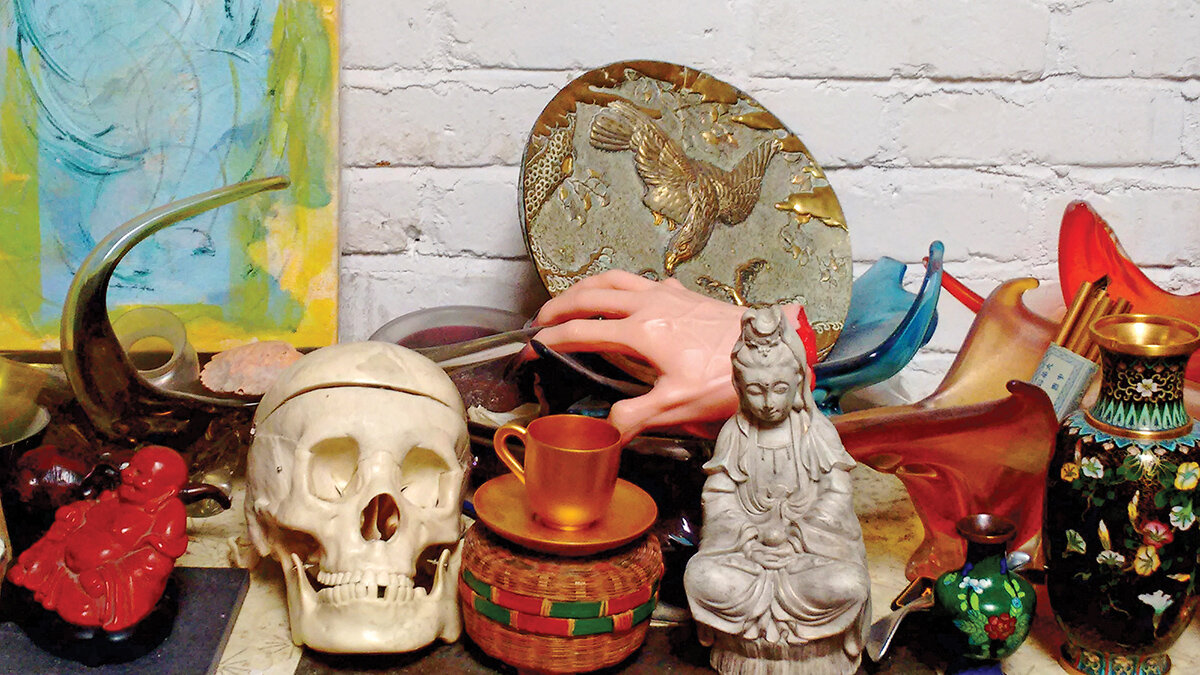


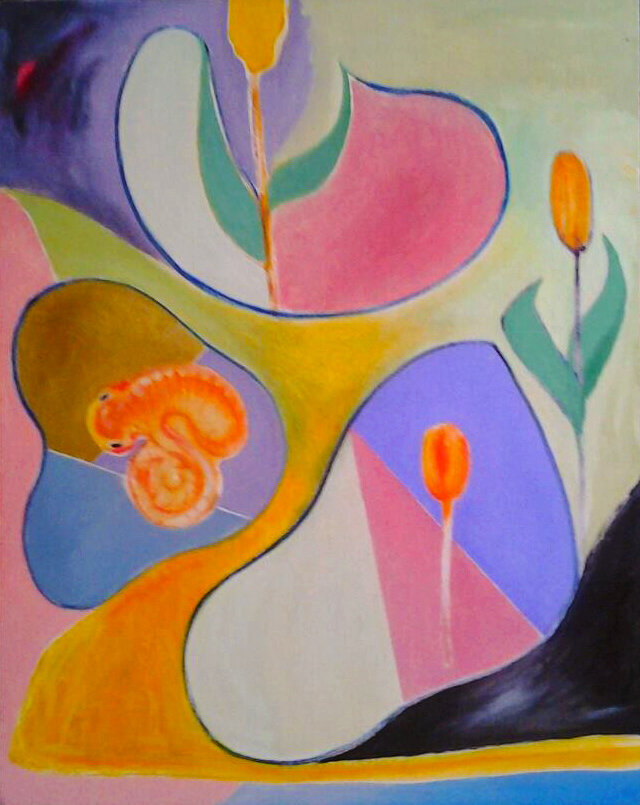
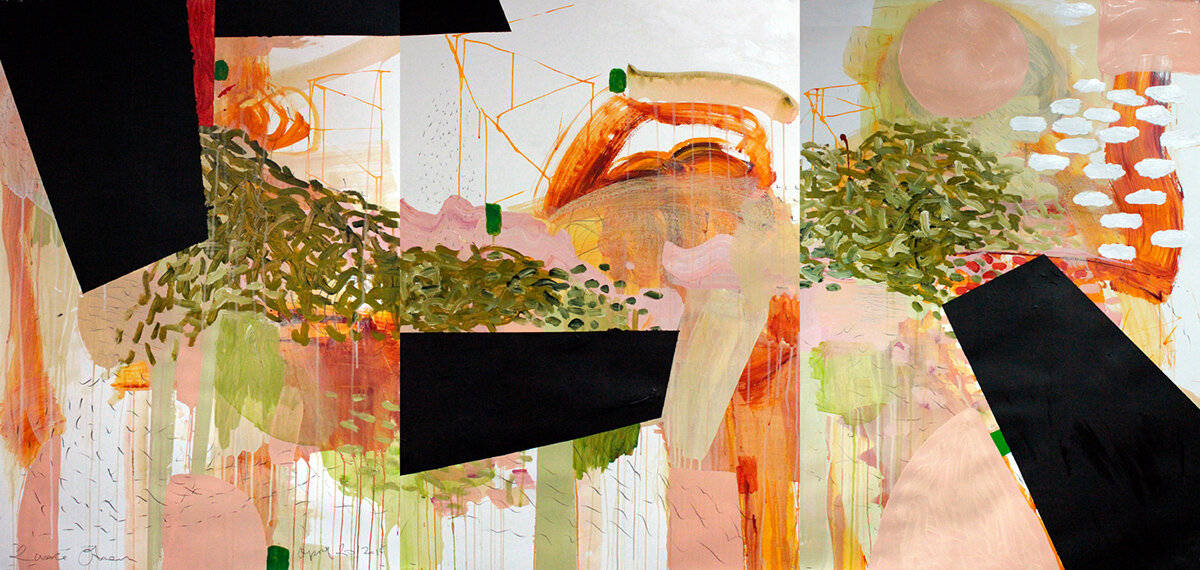
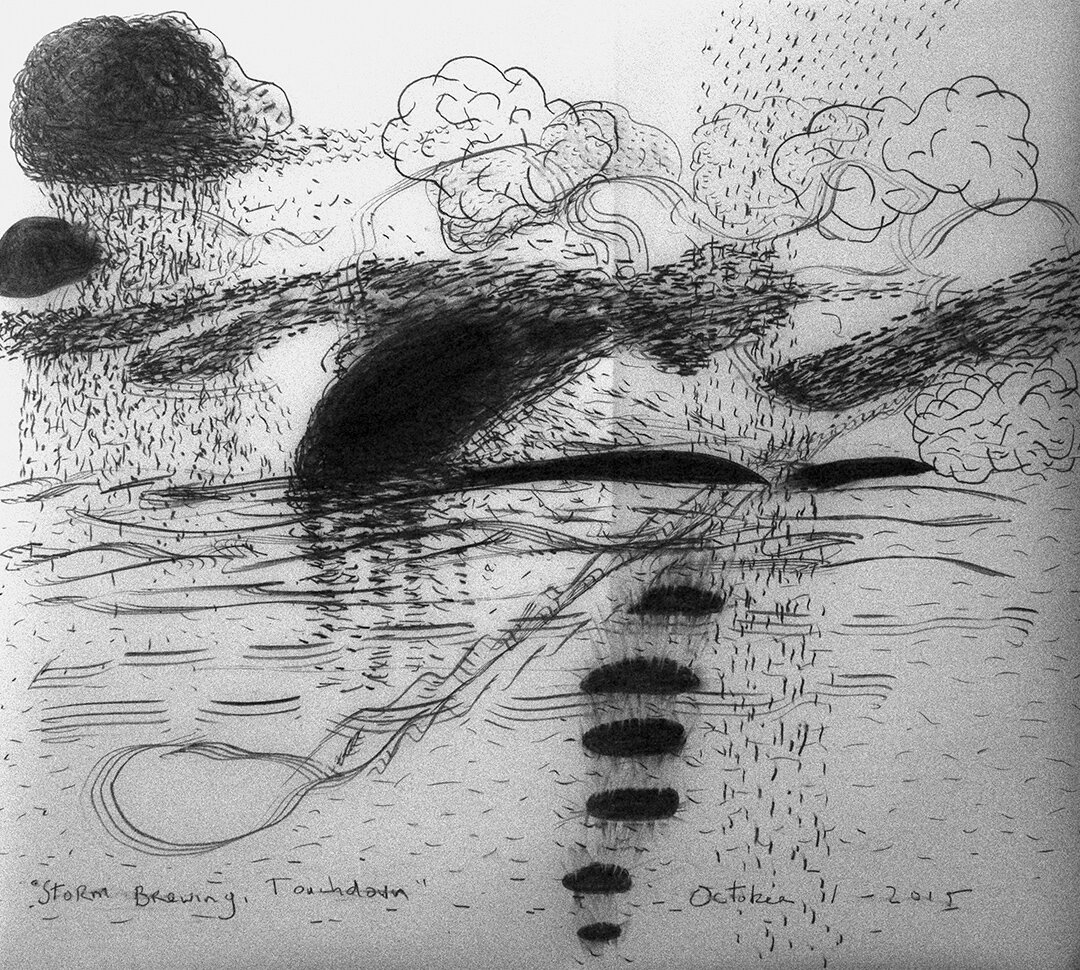
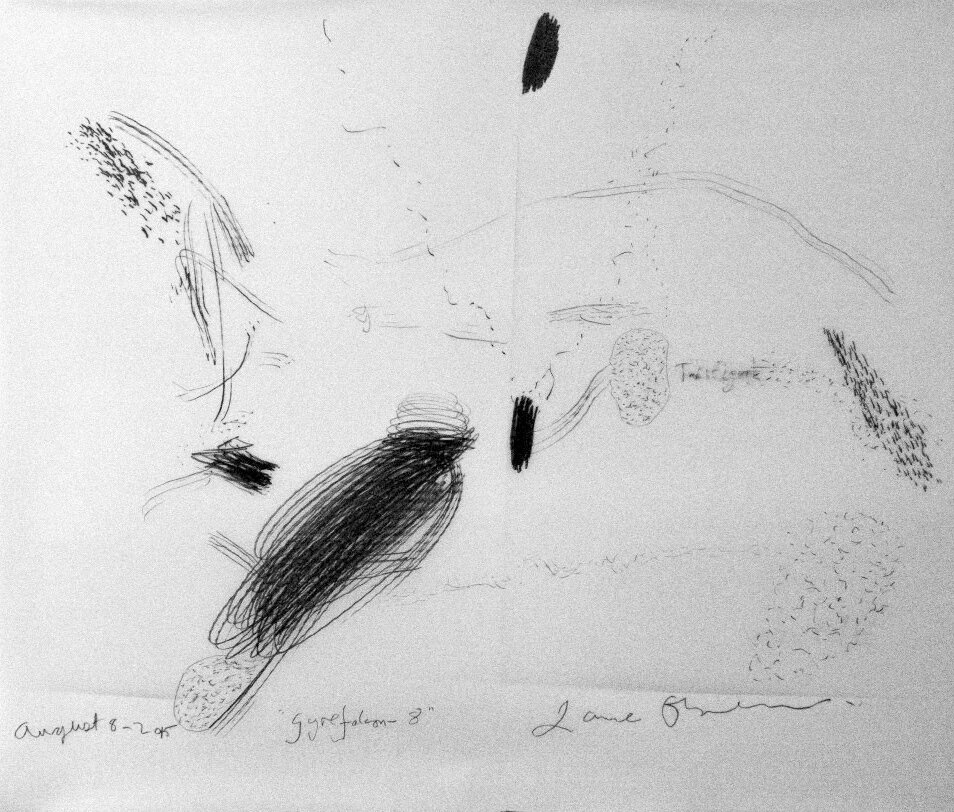
hide in plain sight
James Lindsay | Lance Austin Olsen
January 29 to February 27, 2016
Hide In Plain Sight is an exhibition of new work by James Lindsay and Lance Austin Olsen; a result of the independent investigations of each while operating as a kind of interrogatory of each other. Contemporaries who have evolved highly developed visual languages through five decades of continuous artistic activity and experimentation with abstraction, both share a deep and venerable connection to Victoria: Olsen as a longtime denizen of James Bay and Lindsay as one of the original artists to base themselves in Chinatown. Hide In Plain Sight comprises a series of paintings by Lindsay (using as a point of departure a discarded canvas found in his Chinatown environs) and two painted triptychs and a number of monochromatic drawings by Olsen, as well as a small portion of the vast accretion of objects from Lindsay’s studio/living space installed below an early seascape by Myfanwy Spencer.
Lindsay: “Lance, is it strange or enigmatic to be here doing what you are doing? When you look at your work (in the show) do you recognize yourself? Is that the self you have always known…or is your self adaptable to new situations, new interpretations, new work? Do you feel a narrowing of focus as you proceed through these years of maturity? Or do you feel the urge to broaden, use new strategies, new lexicons, new medications?”
Olsen: “It is strange and enigmatic; I feel so often that I am floating through a dream world particularly when I look back and events seem so unreal and fuzzily focused. I do see myself when I look at current work,s however it does not take much time when it seems impossible that I produced any of the work. I have always viewed my work as footsteps through my life and as such felt that it was much more important to do the work than to worry about sales or recognition. I think that I know who I am as much as one ever can. I have always thought that it was important to keep the painting faith as that is something both difficult and worthwhile. At the same time working with sound has opened up a huge world that is both related and different. One feeds the other. I have always had a fear of developing a personal style or logo and then spending years polishing it, so exploration within tight parameters has been my way. I don’t worry about what it all ‘means.’ As TS Eliot noted, ‘Meaning is the meat that the burglar throws to the dog while he robs your house.’”
Olsen: “I have always been acutely aware of your work and happy that we have both stuck it out in this wonderful place. I was curious as to how you came to collecting so many different things, and how this has affected your approach to your work. I was also fascinated to find that you had got into sound, music performance, etc at about the same time that I did, but with a totally different direction. Did this move your paintings into new directions or did these activities remain separate entities? I know that for myself I am sent all kinds of sound and music CDs from other artists but I never listen to them in the same way that I no longer read art magazines (since) it tends to get in my way at this late date in my life. How about you?”
Lindsay: “I’ve been collecting a long time and am in love with many of my things. They have been sheltered by me for more than 50 years, some of them…preserved safely though there have been some losses, some declines, some cultural change (an elephant ivory necklace was very desirable 50 years ago but is now taboo, excluded from the market). I’m aware that my collecting is a medical condition, but I have cultivated the condition to make it manageable—I have no cats. The enigma of the moment is the two old white men at Deluge…common 50 years ago, super rare today! But never before have I faced the question of total divestment as I do at this time. Either the collection goes or I go. Fact is, we both go. Dust. I’m hoping the collected works on the wall, from the precursor paintings with recycled imagery, and with Myfanwy Spencer as part of the accretion of cultural objects, it will say a lot about time and place. The Time and Place that I speak of is pretty much one that I share with Lance. So much looking forward to seeing the differences, evolutionary principle, niche.”
Lance Austin Olsen has represented Canada in a number of biennials with his large-scale paintings and drawings. His working method is uniform across all of his mediums: a surface is endlessly reworked, with each subsequent piece forming a record or narrative of ongoing discovery. Through this process, or matrix, the viewer experiences an inextricable link between the activity of producing the work as well as the sense that they are seeing but one element in a lifelong pursuit.
James Lindsay has lived and worked as an artist in Victoria since 1974. His works are represented in public and private collections including The Art Gallery of Greater Victoria, The Canada Council Art Bank, The Province of British Columbia Art Collection, and the University of Victoria Legacy Art Galleries.